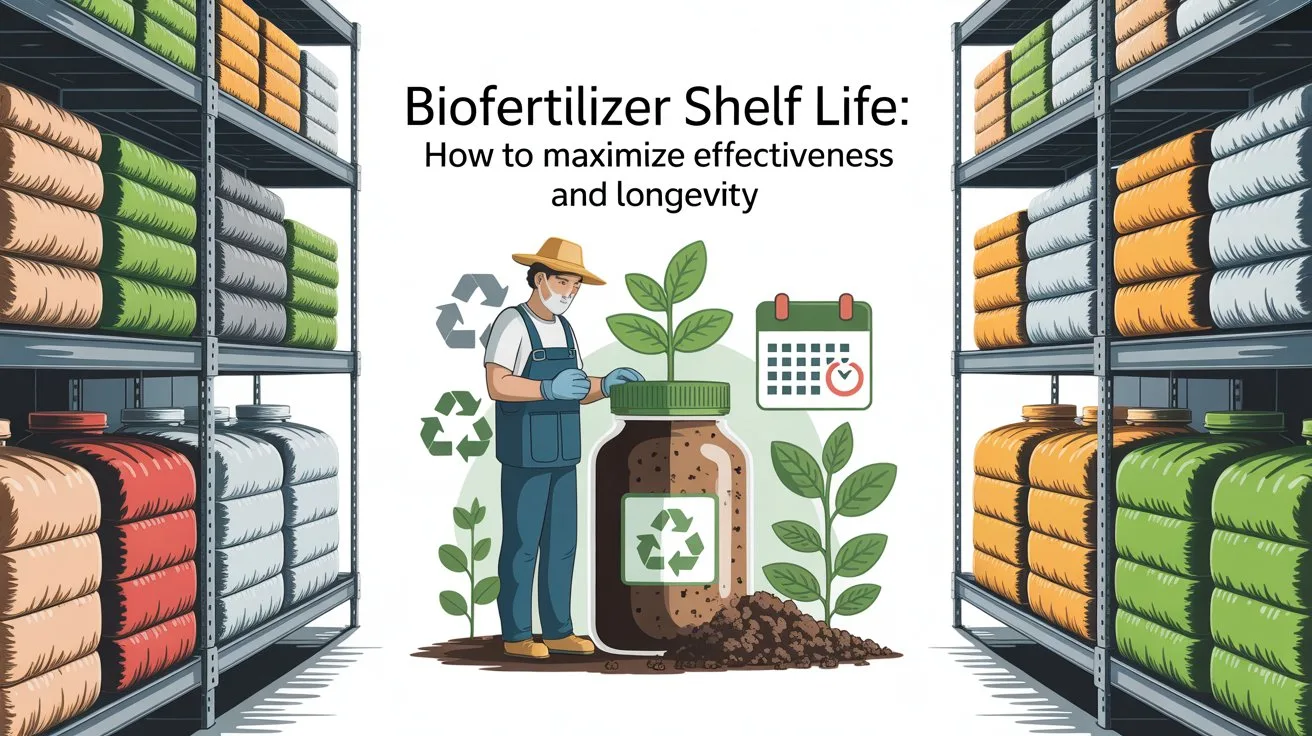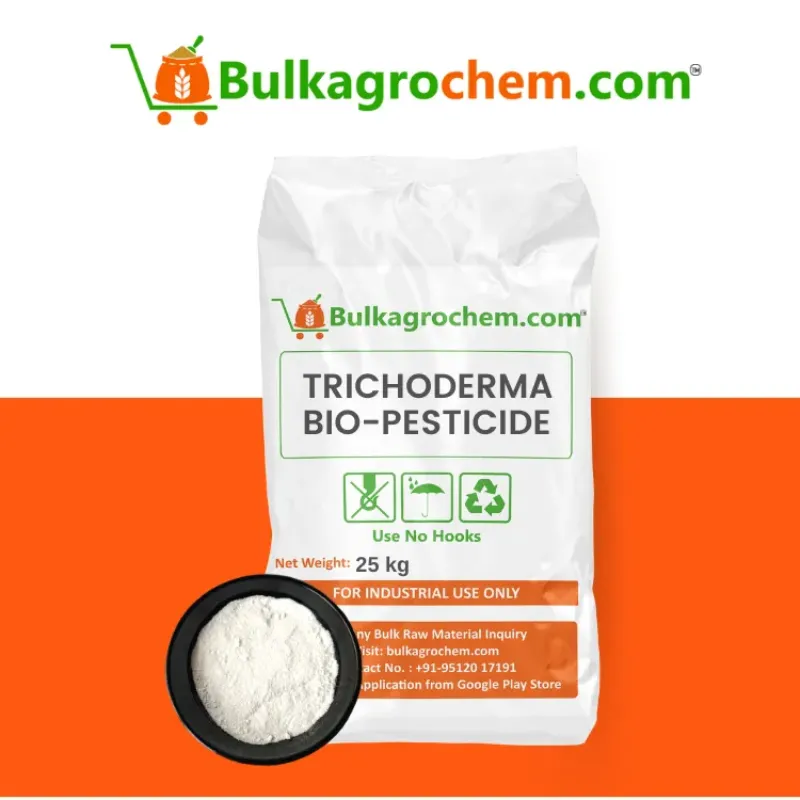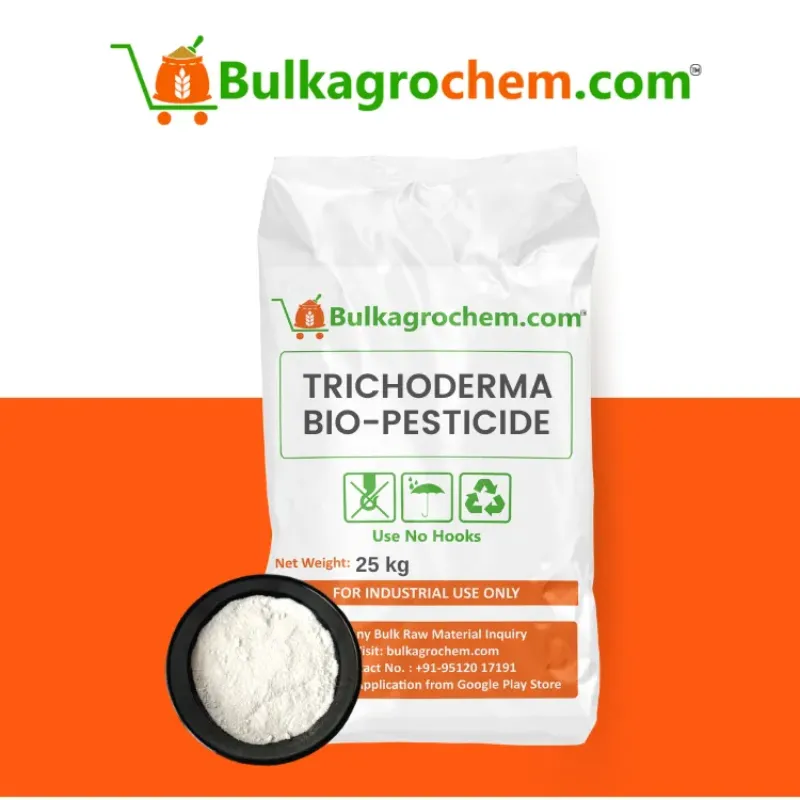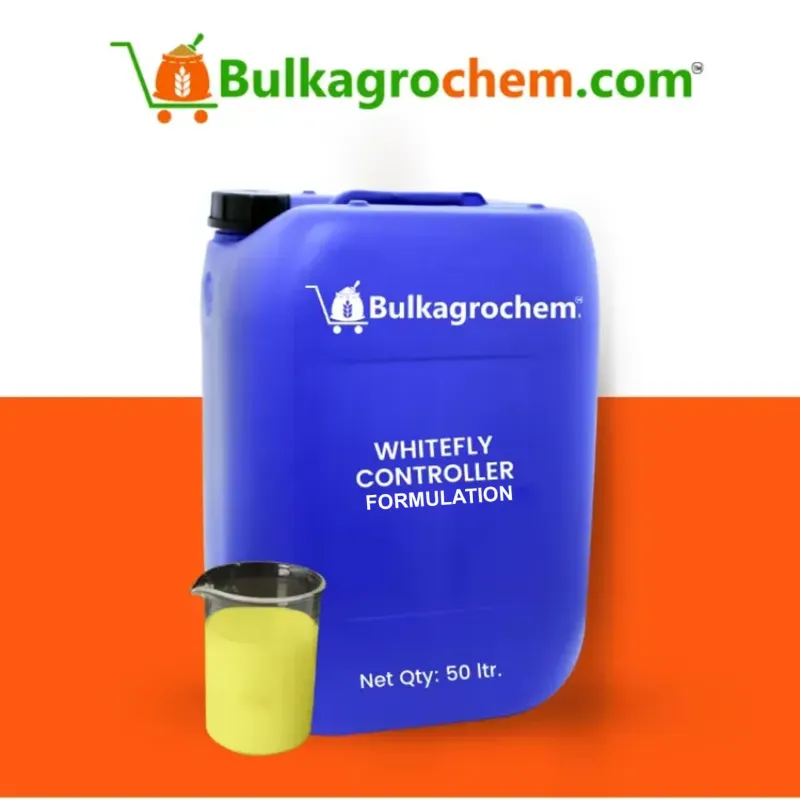The shelf life of biofertilizers is affected by proper storage. Biofertilizers are an example of living organisms that improve the fertility of the soil and aid plant growth by natural methods such as nitrogen fixations and solubilization of phosphorus. However, the shelf life of biofertilizers is highly dependent on the surrounding temperature, humidity, and light exposure. Correct storage of biofertilizers ensures that their efficacy is high, which is essential for achieving the best crop yields.
For liquid biofertilizers, temperature is an important factor that determines their viability. Showing them in dark and cool places can help to protect the microbial life from degradation. Ensuring that biofertilizers are sealed in airtight containers is also important to avoid contamination from moisture and air that makes them less effective. Regular monitoring, together with proper packaging, can help maintain the potency of biofertilizers and maximize their shelf life. Correct storage ensures the potency of liquid biofertilizers and boost crop yields.
Introduction: Understanding Biofertilizer Shelf Life and Liquid Biofertilizer Storage
Biofertilizers are crucial for sustainable agriculture in areas such as soil and plant health as they perform natural functions such as nitrogen fixation and nutrient solubilization. The functions of these biofertilizers are placebo if they go unused beyond their shelf date. Proper storage of biofertilizers especially for liquid types ensures they are spore rich and helpful in increasing crop productivity. This article analyzes the importance of shelf date biofertilizers, shelf date differences between liquid and solid biofertilizers, and best methods to retain biofertilizer efficacy.
Why Biofertilizer Shelf Life Matters
Biofertilizers are encased with dormant microorganisms that carry out bio-chemical reactions such as nutrient cycling in soil. The longevity of biofertilizers is directly interconnected with the life span of these microbes. Reducing a biofertilizer product’s shelf life yields a product encased with less cell mass rendering the biofertilizer less valuable.
- Best biofertilizer: results are experienced when applied at the biofertilizers peak active date. Expired biofertilizers or biofertilizers stored in substandard conditions increases soil’s degradation while crop yields depreciate yields results.
- Restricted Waste: Understanding shelf life aids in proper planning and biofertilizer repurchase minimization. This saves farmers' biofertilizers costs while making sure that the product used is effective.
Liquid Biofertilizer vs. Solid Biofertilizers: Storage Considerations
Importance of Proper Storage for Biofertilizer Longevity
Liquid biofertilizers require proper storage to ensure efficacy is maintained, and here are tips to ensure biofertilizers are stored properly.
- Liquid biofertilizers are best kept close to room temperature while solid biofertilizers are best stored under 20 degrees. Ideally biofertilizers are best kept in dry cooling environments. Keeping solid biofertilizers in cooler environments such as 5-20 degrees also ensures efficacy is maintained.
- Air tight containers are also beneficial to both solid and liquid biofertilizers. Without air entry, biofertilizers are less likely to be exposed to moisture and air degradation.
- Liquid biofertilizers have sensitive microbial strains that can be negatively impacted from exposure to sunlight. For solid biofertilizers, prolonged exposure to sunlight can diminish the effectiveness.
- Loss in biofertilizers potency are often monitored over time along with they ability to enhance soil and improve plant growth. Regular assessments of stored biofertilizers ensure they are monitored properly and their effectiveness is maintained.
The Science Behind Biofertilizer Shelf Life and How to Maximize It
Preserving microbial life is crucial in maintaining biofertilizers’ efficacy because microorganisms play an essential role in sustaining soil health and biofertilizers significantly aid in this process. Biofertilizers function specifically by increasing microbial activity in soil, mainly through symbiotic bacteria, fungi, and algae. Some bacteria aid in N-fixation as well. These microorganisms, however, require particular environmental conditions in order to thrive. In this part, we contemplate the importance of environmental conditions that biofertilizers deserve to be safeguarded and held in.
Microbial Life in Biofertilizers and Its Sensitivity
- Importance of Biofertilizers: In the biofertilizers’ life cycle, microorganisms ameliorate the soil, and in return, biofertilizers derive their nourishment. With proper environmental conditions, biofortilizers can operate with the aid of light to some extent. Nevertheless, while exposed to high levels of humidity, light, or warmth, these microorganisms face enduring damage that proves fatal for low amounts of these environmental conditions.
- Microbial life is the backbone of biofertilizers: when their life span ends, in the absence of enough nourishment, the biofertilizer set to aid perish and simultaneously lose its potency. In the absence of requisite conditions, biofertilizers will no longer have the potency which is essential for high-performance agriculture to thrive.
- Microbial Survival and Shelf Life: The effectiveness and potency of biofertilizers and their shelf life are directly dependent on microbial life. In order for biofertilizers to retain their potency, they must be stored in conditions that sustain microbial life. If they are stored under unsuitable conditions, the active microorganisms capable of providing the intended benefits to plants, soil and crops greatly reduces in number.
Liquid Biofertilizer Shelf Life vs. Granular Biofertilizers
Optimal Temperature and Humidity for Biofertilizer Storage
- Storage Conditions temperature: Biofertilizers require the correct temperature to maximize their shelf life, especially liquid biofertilizers. For biofertilizers, the optimal temperature range is between 4 to 15 degrees Celsius. In particular, liquid biofertilizers are sensitive to temperature changes. In addition, higher temperatures e.g. above 25 degrees Celsius, leads to higher microbial respiration and biosynthesis.
- Controlling Humidity Levels: In addition to temperature control, humidity control is equally important. For solid biofertilizers, excess moisture leads to clumping, which lowers microbial effectiveness. Liquid biofertilizers can spoil entirely. For effective storage biofertilizers should be kept between 40-60% humidity.
- Preserving biofertilizers from sunlight is also essential: Ultraviolet rays are very harmful to the microorganisms encapsulated in liquid and granular biofertilizers. Also, light makes sensitive biofertilizers react even faster, hence, making them less effective.
Best Practices for Storing Biofertilizers and Liquid Biofertilizer
Your biofertilizers can be best utilized only when they are stored correctly. Loss of microbial activity due to incorrect storage will cause a biofertilizer to be useless. Correct practices in storage can aid in maintaining the shelf life of biofertilizers and liquid biofertilizer and support the desired potency for thriving plants.
Ideal Storage Conditions for Biofertilizers
- Temperature Control: Like all other farm inputs, biofertilizers, both in liquid and granular form, are highly temperature sensitive. They should be kept in cool, dry places, sheltered from sunlight. Liquid biofertilizers and number of microorganisms contained in them are best preserved when the temperature is kept between 4 degrees celsius to 15 degrees celsius. Temperature in this range slows the microbial life in biofertilizers from dying too quickly.
- Humidity Levels: Administering the right levels of humidity is crucial in sustaining the shelf life of biofertilizers. Excess moisture in liquid biofertilizers may lead to spoilage while solid biofertilizers are subjected to moisture, increased deteriorative microbial activity. To keep the biofertilizer effective, the storage environment should have relative humidity of 40-60%.
- Protection from Light: Light and ultraviolet radiation in particular, are known to damage both microorganisms and the fine structure of the biofertilizers. Store biofertilizers in opaque or light resistant containers to maintain them for longer periods. Dark, cool rooms are ideal for storing them, away from light.
Liquid Biofertilizer Storage Tips for Optimal Effectiveness
- Seal Properly: The containers of liquid biofertilizers should be tightly sealed to keep out moisture and air. This ensures microbial viability is preserved and prevents the biofertilizer from degrading. Such actions enable the biofertilizers to better fulfill the requirements placed on them.
- Maintain a Constant Temperature: Temperature changes can affect liquid biofertilizers most negatively. Make sure that the temperature of the environment you are storing the liquid biofertilizers increases or decreases. Excessive heat can lead to the liquid biofertilizers losing their microbial agents while freezing can damage the microbes.
- Use While Effective: Compared to their granular counterparts, liquid biofertilizers tend to have a shorter shelf life. To increase efficacy, liquid biofertilizers need to be used before the mentioned shelf life. The microbial population in liquid biofertilizers decreases over time which decreases the nutrient value of such biofertilizers.
Importance of Packaging for Biofertilizer Shelf Life
- Airtight Containers: The packaging is important in maintaining the shelf life of biofertilizers. The use of airtight containers is beneficial in maintaining biofertilizers as they do not allow moisture and air to enter, hence preventing microbial degradation. Appropriate packaging also shields biofertilizers from external contamination and guarantees that the microorganisms within can remain viable for extended durations.
- Light-Resistant Materials: The biofertilizers should not be exposed to UV radiation which means packaging components should be light resistant. The use of opaque materials like dark plastic and aluminum goes a long way in preserving the biofertilizers by shielding them from harmful light.
- Proper Seals: The biofertilizers in containers need to not only be tightly shut, they also need to be leakage free as well hence, packaging integrity is critical. Hydrating biofertilizers needs to be sealed to ensure their effectiveness over prolonged durations.
Common Mistakes That Shorten Biofertilizer Shelf Life
Aside from liquid biofertilizers, all biofertilizers are products that need to be maintained not only in the right environment, they also need to be stored in the right conditions to be most potent. Considerable microbial activity loss can occur due to certain storage errors, therefore, in a bid to enhance the shelf life and effectiveness of biofertilizers, the first step is to eliminate the mistakes that most farmers and gardening enthusiasts are known to make.
Incorrect Temperature and Humidity
- Temperature Issues: Store biofertilizers under fluctuating temperatures of 4°C and 15°C is ideal. Above this liquid biofertilizers may result in microbial breakdown, while below this it may kill the microorganisms.
- Humidity Issues: High levels of humidity above 40% and below 60% may result in biofertilizers actively spore. It can also breed harmful microorganisms and fungi, Produto may result in granulated biofertilizer spoilage.
Exposure to Light and Air
Biofertilizers, and more so their liquid formulations, are prone to destructive effects from exposure to light, especially ultraviolet light. Ultra violet light as well as other types of light can easily break down the microorganisms for the culture to be efficient. It is necessary to keep biofertilizers in opaque light-proof containers to protect them from pernicious light.
- Air exposure: Oxygen and moisture can lead to the growth of unwanted microorganisms, which can lower the quality of biofertilizers. For this reason, containers should be vented.
Using Non-Airtight Containers
Biofertilizers, particularly liquid ones, are prone to losing their potency and activity due to exposure to air, moisture, and other environmental conditions. Non-airtight containers lead to exposure of the contents to air and moisture which in turn results in liquid biofertilizer contamination. The importance of using airtight containers for biofertilizers to keep the microbes in the liquid formulation and thus their activity intact cannot be overemphasized.
- Packaging Integrity: When purchasing biofertilizers, ensure the containers are properly sealed to safeguard the contents from contamination. Ensure the packaging is in its advertised state, and there are no signs of leaks.
FAQs
Q1. What is the ideal temperature for storing biofertilizers?
Biofertilizers should be stored between 4°C to 15°C to maintain the viability of microorganisms. Temperatures above 15°C can degrade the microbes, while freezing temperatures can kill them.
Q2. Can biofertilizers be stored in the refrigerator?
Storing biofertilizers in a refrigerator (around 4°C) is a good option, especially for liquid biofertilizers. However, ensure the container is sealed tightly to prevent moisture and contamination.
Q3. How long do biofertilizers last in storage?
The shelf life of biofertilizers depends on the product and storage conditions, but typically, they can last anywhere from 6 months to 2 years. Proper storage at the right temperature and humidity will help extend their shelf life.
Q4. Can I store biofertilizers and chemical fertilizers together?
It is not ideal to store biofertilizers and chemical fertilizers together. Chemical fertilizers may expose biofertilizers to harmful chemicals or moisture, compromising their effectiveness.
Q5. How do I know if my biofertilizer has expired?
If the biofertilizer has changed color, has a foul smell, or if there are signs of microbial growth like mold, it’s likely expired. Additionally, check the expiry date on the packaging and inspect for any damages to the container.
Conclusion: Make the Most of Your Biofertilizer Investment by Ensuring Proper Storage
Proper storage of biofertilizers is essential for maximizing their effectiveness and extending their shelf life. By adhering to optimal storage conditions—such as maintaining the right temperature, humidity, and light exposure—you can ensure that the beneficial microorganisms in the biofertilizers remain active and potent when applied to your crops. This, in turn, leads to healthier soil, improved plant growth, and increased crop yields, making your investment in biofertilizers worthwhile.
By avoiding common mistakes like improper temperature regulation, exposure to light, or using non-airtight containers, you protect your biofertilizer from degradation. Remember, biofertilizers are a natural, sustainable option that supports organic farming and environmentally friendly practices, and proper storage helps preserve these benefits for a longer time. Take the time to properly store your biofertilizers, and you will reap the rewards of healthier, more productive farming.




